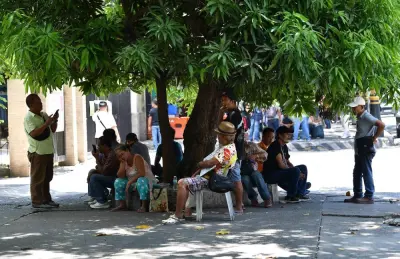Reuters/Manila
A powerful typhoon roared into the eastern Philippines on Saturday, bringing lashing rain and strong winds that felled trees, ripped off tin roofs and toppled power lines in areas still bearing the scars of a super typhoon 13 months ago.
About 1 million people had already fled to shelters by the time Typhoon Hagupit made landfall, in what a U.N. agency said was one of the world's biggest peacetime evacuations.
As the storm barrelled in from the Pacific, power was cut across most of the central island of Samar and nearby Leyte province, including Tacloban City, considered ground zero of the devastating super typhoon Haiyan last year.
"The wind is blowing so strongly, it's like it is whirling," Mabel Evardone, an official of the coastal town of Sulat in Eastern Samar, said on local radio. "The waters have risen now."
There was no word of any casualties.
Hagupit had weakened to a category 3 storm, two notches below "super typhoon", but could still unleash huge destruction with torrential rain and potentially disastrous storm surges of up to 4.5 metres (15 ft), the weather bureau PAGASA said.
The eye of the typhoon hit the town of Dolores, Eastern Samar at 9:15 p.m. (1315 GMT), PAGASA said, adding the storm maintained its strength, with winds of up to 175 kph (110 mph) near the centre and gusts of up to 210 kph (130 mph).
"We can expect that heavy rains were dumped on Eastern Samar because Ruby hovered for a long time over the coastal areas," weather forecaster Jori Loiz said on radio, referring to the local name of typhoon Hagupit.
The weather bureau said Hagupit - which means "lash" in Filipino - maintained its projected path towards Masbate, Romblon and Oriental Mindoro provinces, slightly north of areas devastated by super typhoon Haiyan last year.
PAGASA earlier said the storm was moving north northwest at 16 kph (10 mph).
"Ruby's lashing will be severe," Interior Secretary Manuel Roxas told government radio. "Let's be alert. Let's evacuate to prevent any harm to your families."
Philippine Airlines and Cebu Pacific cancelled about 100 flights to central and southern Philippines on Saturday.
Residents of low-lying villages and landslide-prone areas have fled to schools, civic centres, town halls, gyms and churches, the national disaster agency said.
"We received reports about a million people evacuating already. There is increased awareness to make early action and co-operate and do pre-emptive evacuation," Gwendolyn Pang, secretary general of the Philippine Red Cross, said in a television interview.
At least 50 municipalities in the central Philippines and the southern part of the country's main Luzon island were at risk of storm surges, the Science and Technology department said.
The typhoon was unlikely to hit the capital Manila, home to around 12 million people, the agency said.
"Typhoon Hagupit is triggering one of the largest evacuations we have ever seen in peacetime," said Denis McClean, spokesman of the United Nations Office for Disaster Risk Reduction in Geneva.
Relief agency Refugees International said in a statement it was "deeply concerned" that evacuation centres may not be safe.
"A damage assessment of designated evacuation centres in typhoon-affected areas indicated that in some places - such as Eastern Samar, where Hagupit is headed - less than 10 percent of evacuation centres were likely to withstand future typhoons," the group said.



